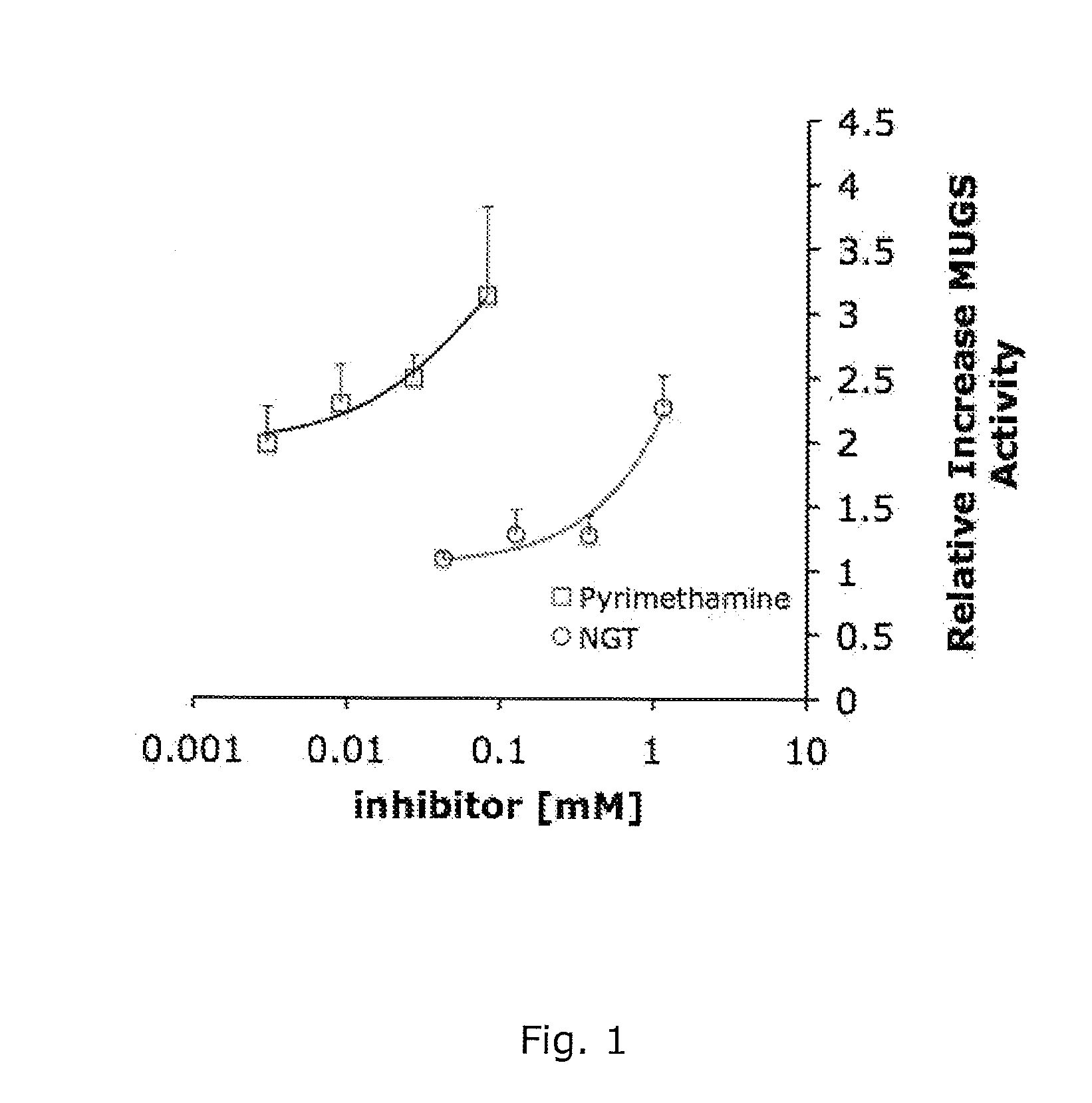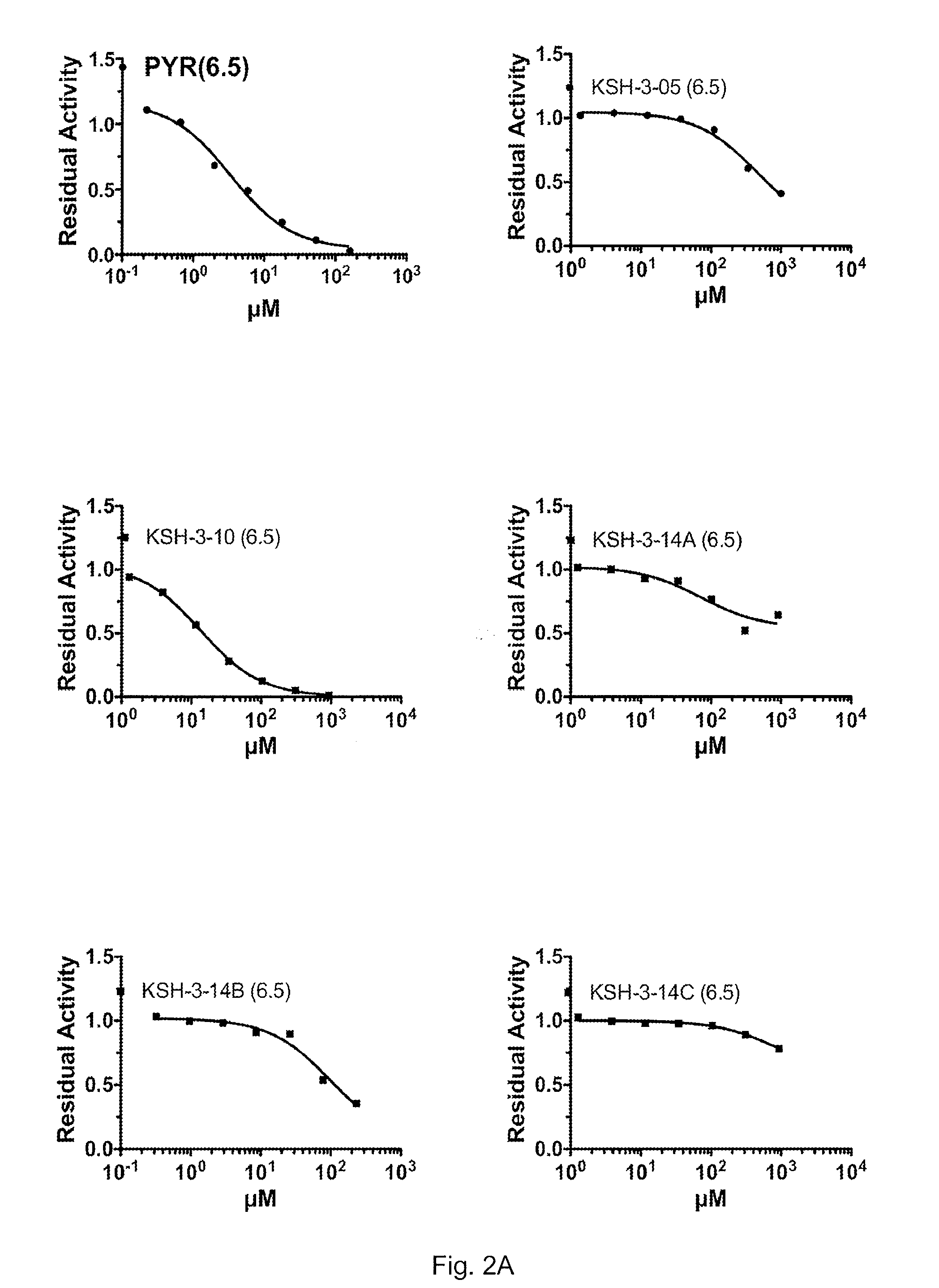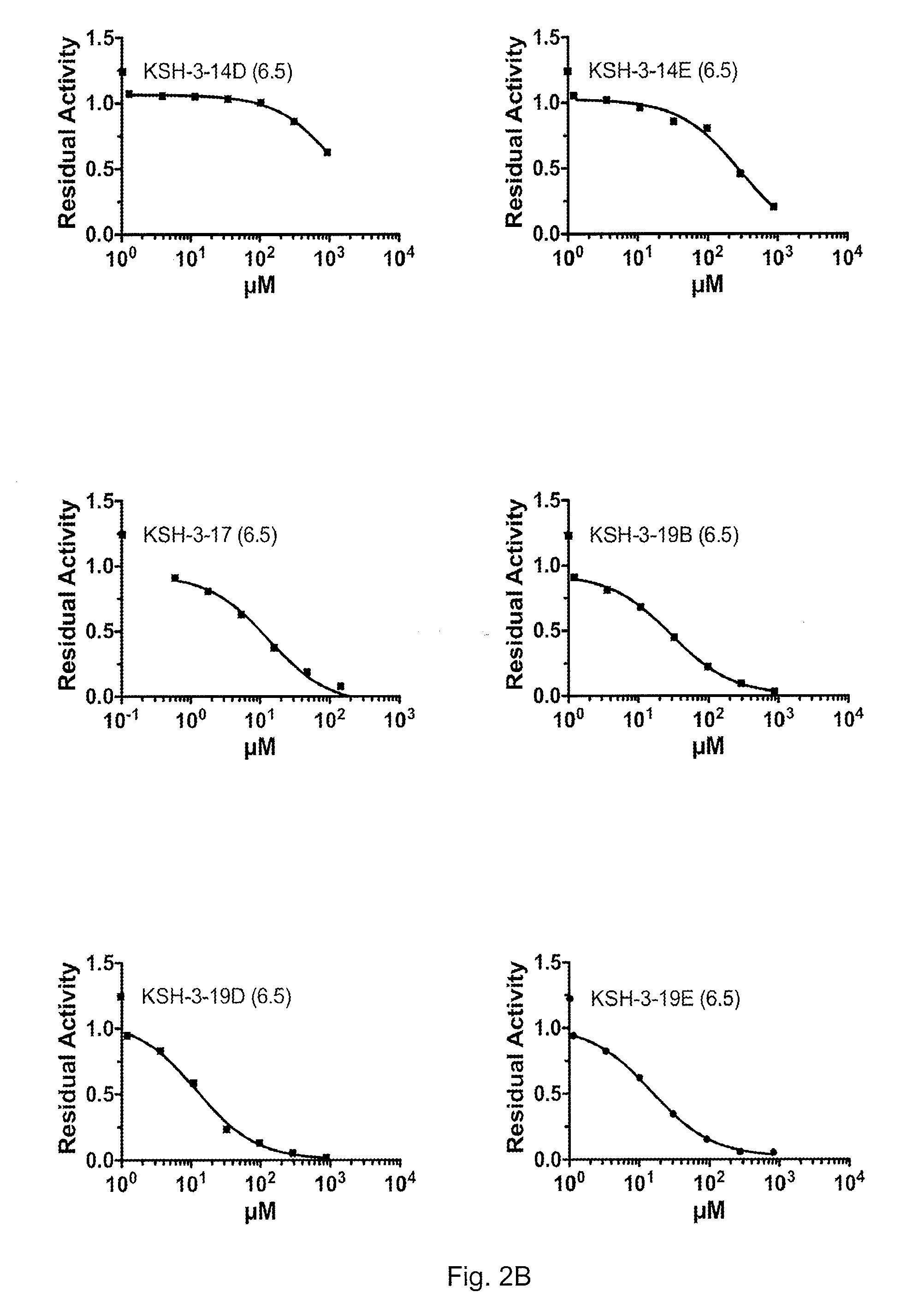Compounds for the treatment of lysosomal storage diseases
a technology for lysosomal storage and compounds, applied in the field of lysosomal storage diseases, can solve the problems of deterioration in the quality of life, death in early infancy, and various lysosomal storage diseases, and achieve the effects of increasing the ability of the lysosomal storage disease to rescue, increasing the range of hex a activity, and increasing the hex a activity
- Summary
- Abstract
- Description
- Claims
- Application Information
AI Technical Summary
Benefits of technology
Problems solved by technology
Method used
Image
Examples
example 1
Identification and Characterization of PYR as a Hex A Inhibitor
[0114]The NINDS library was screened for compounds having Hex A inhibitory activity. PYR (IC50˜8 μM at pH 4.5) and thioguanine (IC50˜2 mM) were identified as candidate inhibitors. The pKHA of PYR was compared to NAG-thiazoline (NGT), a known Hex A inhibitor. Whereas NGT has pKHA of 4.5, PYR has a pKHA of 6.5. This difference in pKHA indicates that different amino acid side chains in or near the active site of Hex A are involved in binding NGT versus PYR.
[0115]Moreover, PYR was found to exhibit an IC50 of 3.4 μg / mL at pH 6.5 and an IC50 of 13.7 μg / mL at pH 4.5. This inhibitory profile of PYR indicates that it should be a better pharmacological chaperone than NGT for treating chronic GM2 gangliosidosis as it will bind tighter to Hex A in the neutral ER than in the acidic lysosome. Indeed, PYR was better able to rescue mutant Hex A activity in fibroblasts expressing a common mutation (αG269S) associated with adult Tays-Sach...
example 2
Preparation of PYR Derivatives
[0116]Using a Selective Optimization Of Side Activities (SOSA) approach, several PYR derivatives were conceived and prepared. The general scheme for the synthesis of PYR and its analogs is as follows:
For example, the derivative KSH3-10 was prepared as follows:
Other prepared derivatives include the structures shown in Table 1.
TABLE 1Structures, names, molecular weights and concentrationsof PYR derivatives.MolecularStockWeightConc.StructureName(g / mol)(mg / ml)vsa425226.67vsa52828.6vsa62675vsa82349.8vsa92505zjm1-9129610zjm1-11125610zjm1-11327210zjm1-115111610zjm1-13526310zjm1-13724210zjm1-13925810zjm1-14129610jts142493.333jts1624410jts2026310jts2223510ksh3-520010ksh3-14a21810ksh3-14b21410ksh3-14c21410ksh3-14d21410ksh3-14e22810ksh3-1724610ksh3-19b22810ksh3-19c22810ksh3-19d22810ksh3-19e24210ksh3-2922810ksh3-33a24610ksh3-33c24210ksh3.33d24210ksh3.33e25610zjm7-6722010zjm7-6922010ksh3-1021410zjm7-2725010
example 3
IC50 Values at Neutral and Acidic pH
[0117]PYR, KSH-10 and the other KSH-series derivatives were tested to determine their IC50 values for Hex A inhibition at both pH 4.5 and pH 6.5. The results are shown in FIGS. 2-4. FIGS. 2A and 2B show the dose response curves for Hex A residual activity following treatment with increasing doses of the respective derivative at pH 6.5. FIG. 2C shows all of these dose response curves together on a single graph. FIGS. 3A-C show similar dose response curves carried out at pH 4.5. FIG. 4 shows the actual IC50 values that were determined from these dose response curves.
[0118]As can be seen from these figures, with the exception of KSH-33C, all of the derivatives demonstrated an IC50 value that was lower at pH 6.5 than it was at pH 4.5. This indicates that all of these derivatives would be good candidates for the treatment of lysosomal storage diseases, as they would be more potent (i.e. more inhibitory) in the neutral ER than they would be inside of th...
PUM
| Property | Measurement | Unit |
|---|---|---|
| weight | aaaaa | aaaaa |
| pH | aaaaa | aaaaa |
| pH | aaaaa | aaaaa |
Abstract
Description
Claims
Application Information
 Login to View More
Login to View More - R&D
- Intellectual Property
- Life Sciences
- Materials
- Tech Scout
- Unparalleled Data Quality
- Higher Quality Content
- 60% Fewer Hallucinations
Browse by: Latest US Patents, China's latest patents, Technical Efficacy Thesaurus, Application Domain, Technology Topic, Popular Technical Reports.
© 2025 PatSnap. All rights reserved.Legal|Privacy policy|Modern Slavery Act Transparency Statement|Sitemap|About US| Contact US: help@patsnap.com



